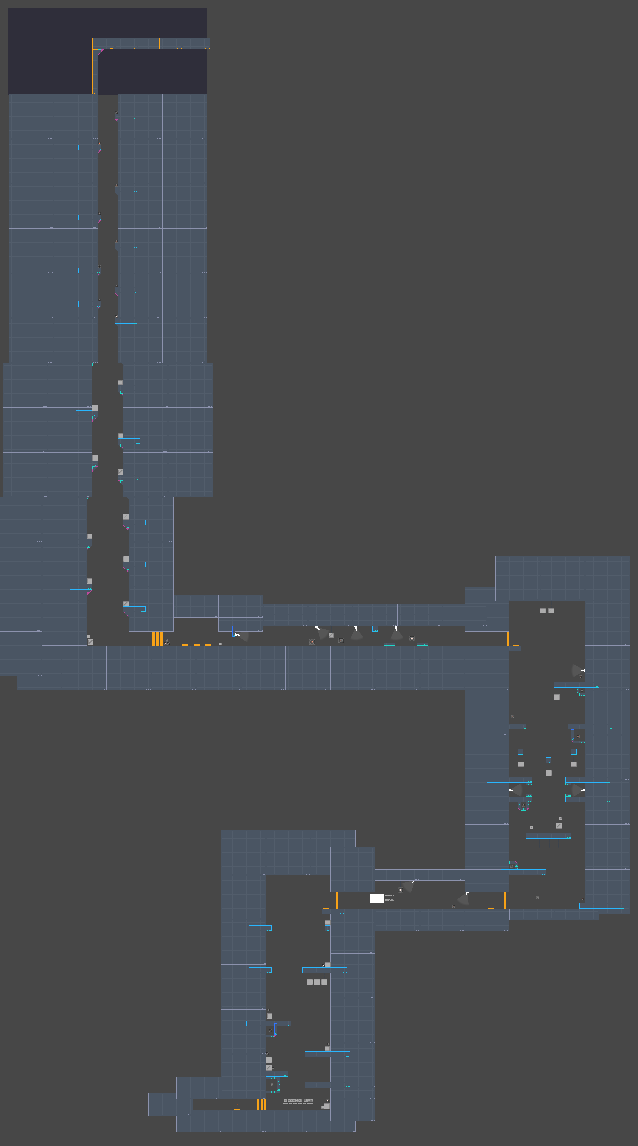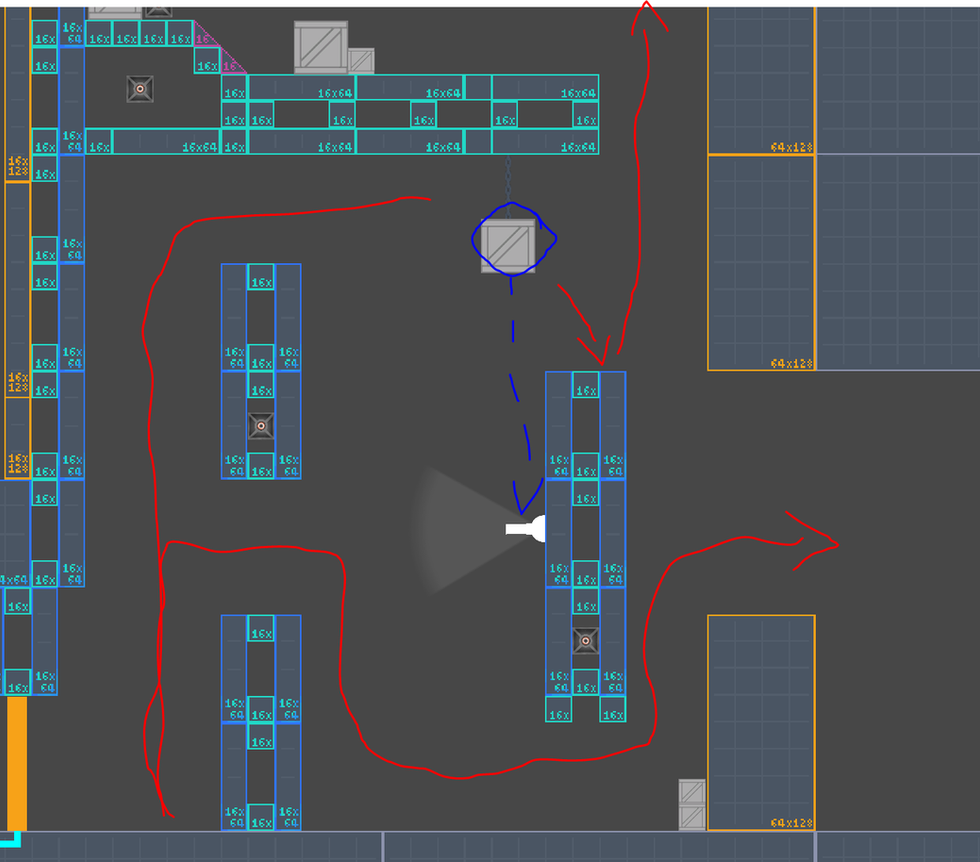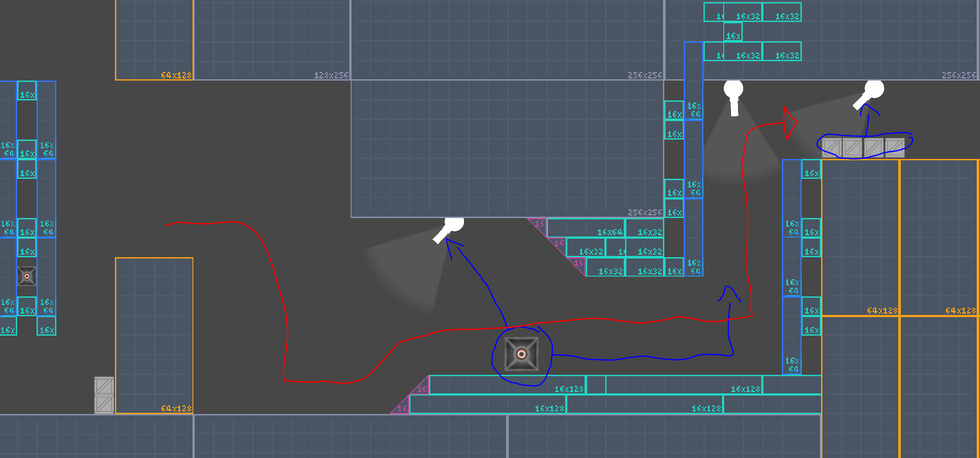

Team: 5 | Role: Designer, Programmer, Level Designer | Timeline: 14 Weeks | Tools: Unity, Jira, Miro, Bitbucket
DESIGN PILLARS
GAMEPLAY
LEVEL DESIGN
TELEMETRY TRACKING
In order to analyze and create better experiences for our players, we created a custom telemetry hook that allowed my team to take a deeper look at the levels through player positions during specific events.

This heatmap details player deaths. The higher volumes often correlate to harder areas.

This heatmap tracks the player's position every second. The denser areas represent areas where players often get stuck.
LEVEL 5
After my position changed to Lead Level Designer in our team, this was the first level I worked on.
LEVEL 7
This was the last level of our prototype of which I was the Lead Designer on. This level was to focus mainly on non-linearity. I think the level flow in this level was the best I was able to pull off during my time on the level design team.
PROGRAMMING/TECHNICAL DESIGN

During our earliest design iterations, we wanted the player to be able to pick up and drop crates so they wouldn't have to fiddle around using our "throw" mechanic for more methodical movements like placing a crate on a pressure plate. I came up with two solutions we thought we'd be able to implement in unity. We actually went with the first option, which soon developed into its own very unique mechanic reminiscent of the hammer from Getting Over It with Bennett Foddy.

With our high speed character controller we wanted to implement a system for some kind of melee attack. I decided it would be best to have this melee system be built around achieving a high enough speed. This details exactly how this system would be implemented, including a state diagram for our animator.









